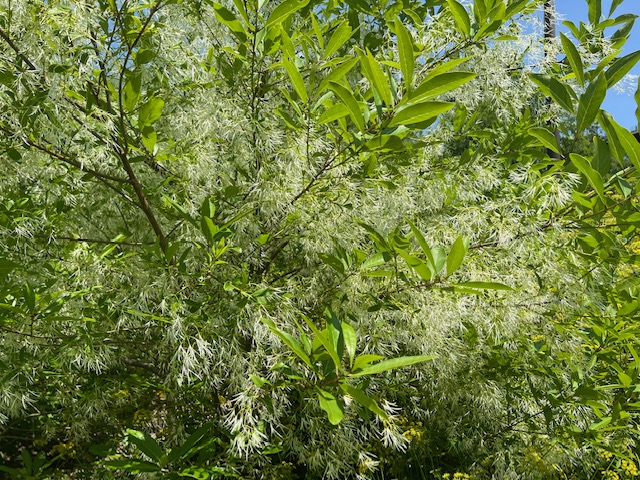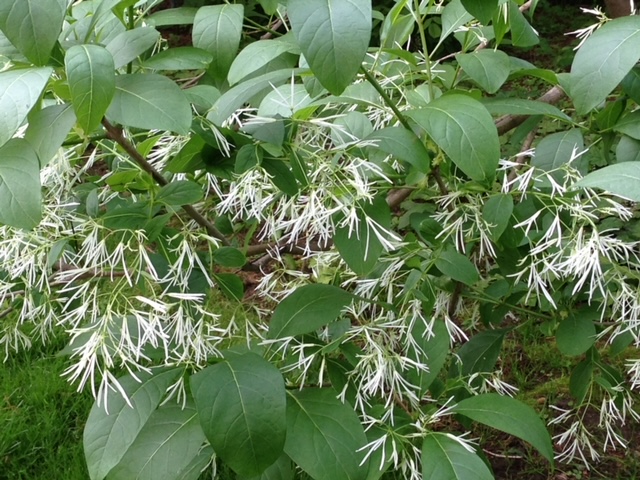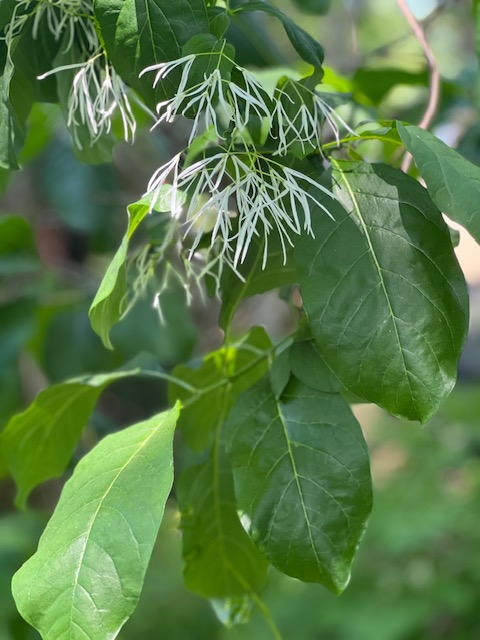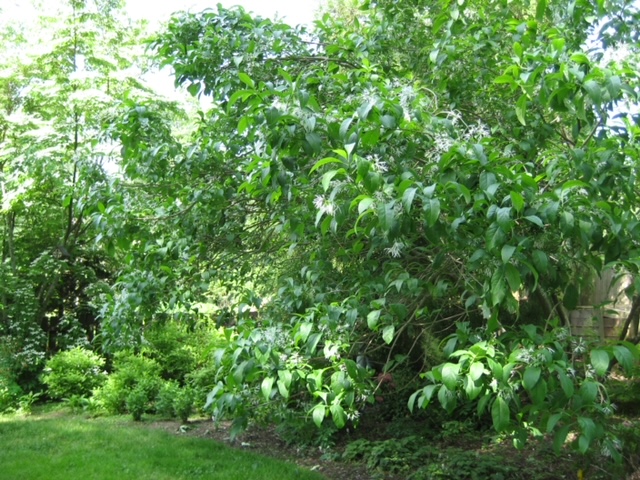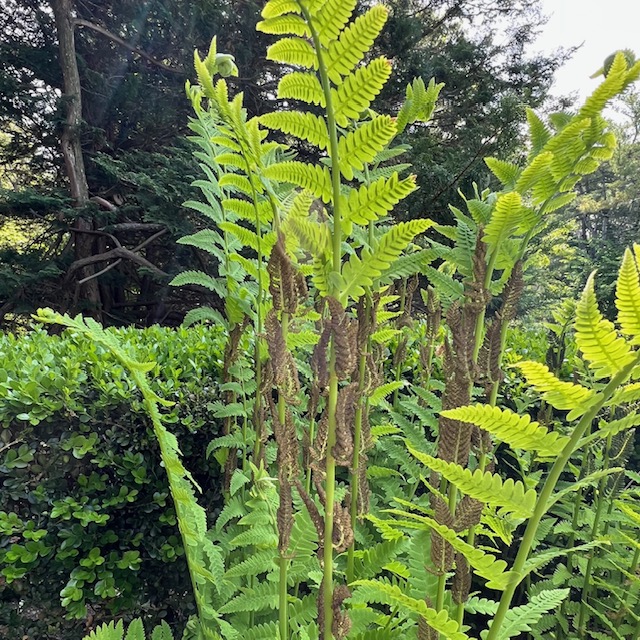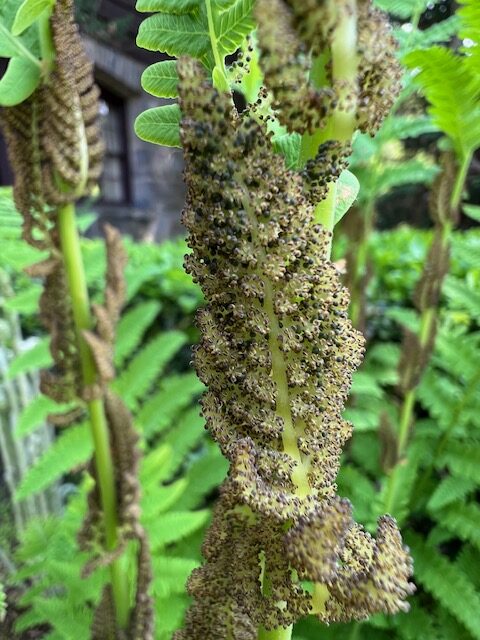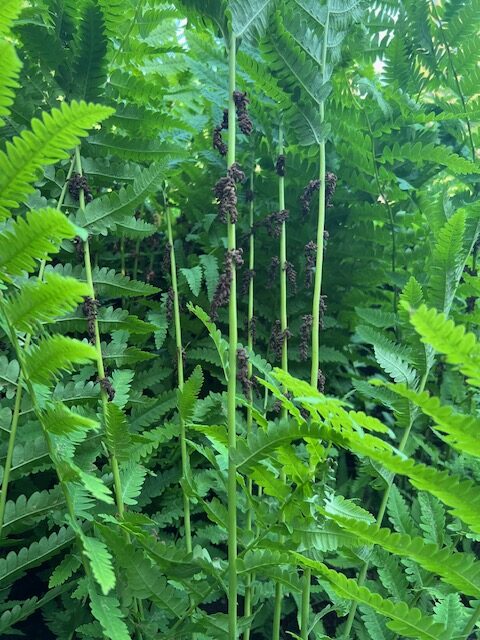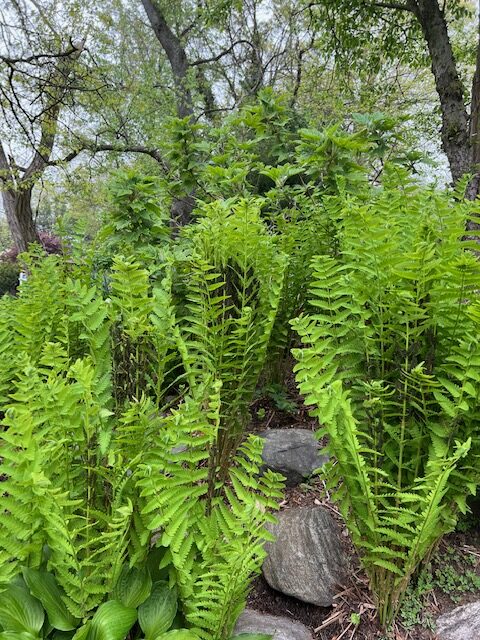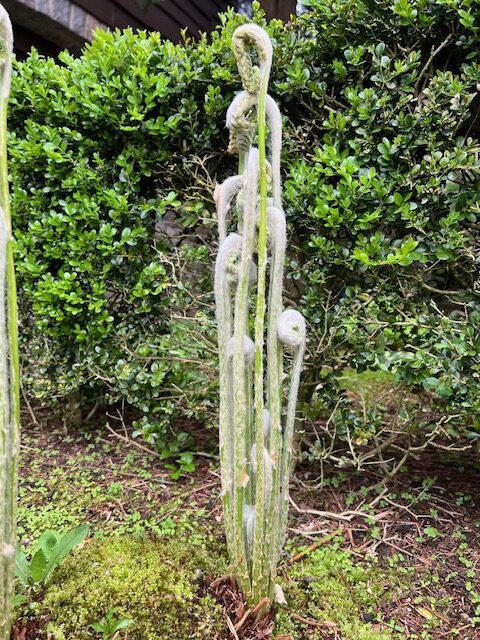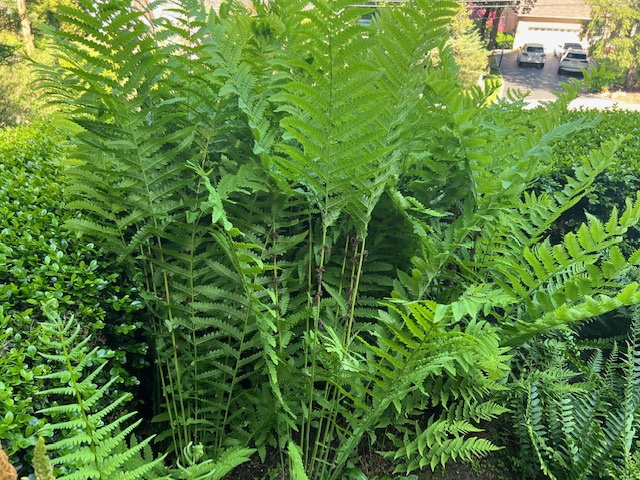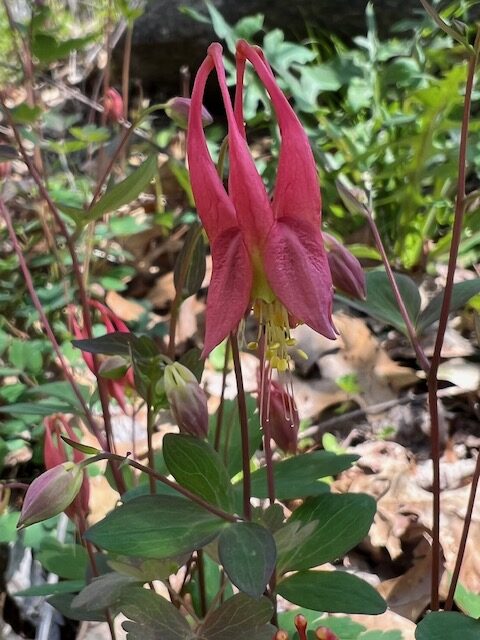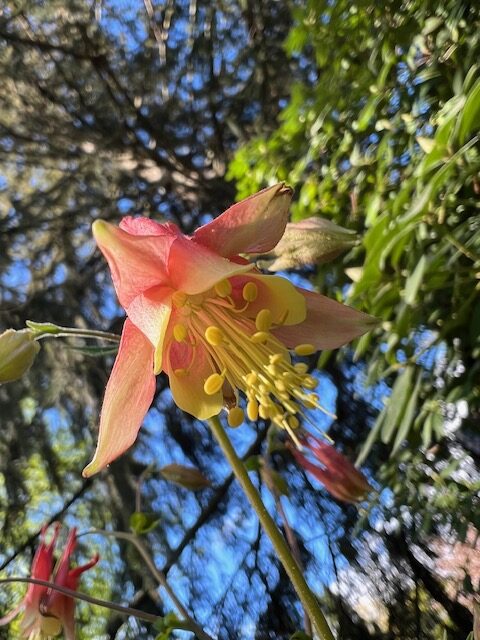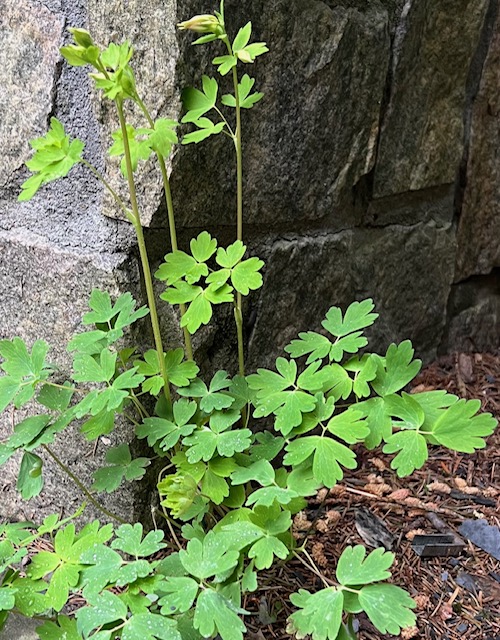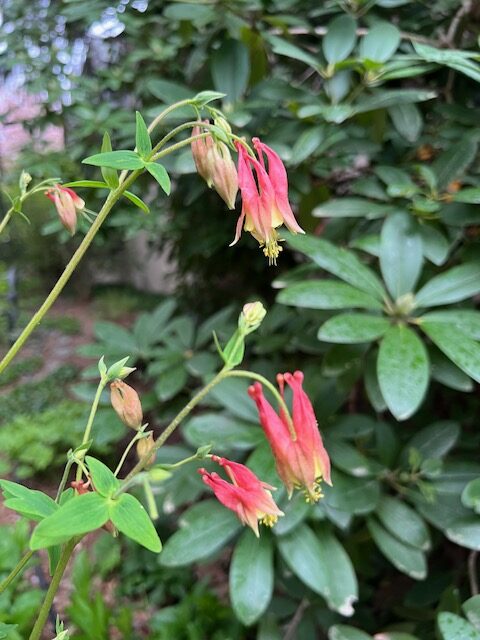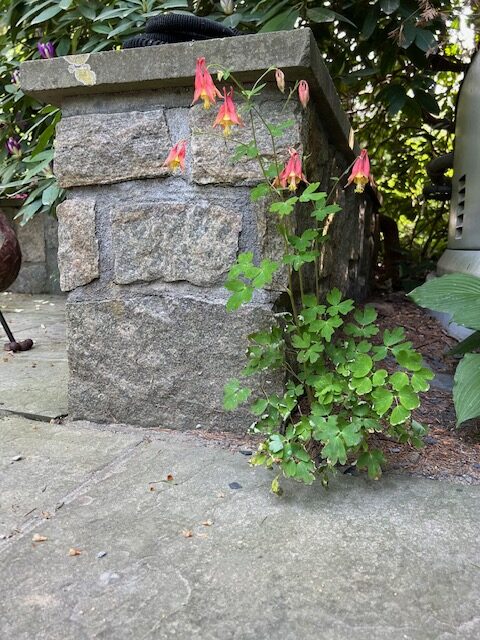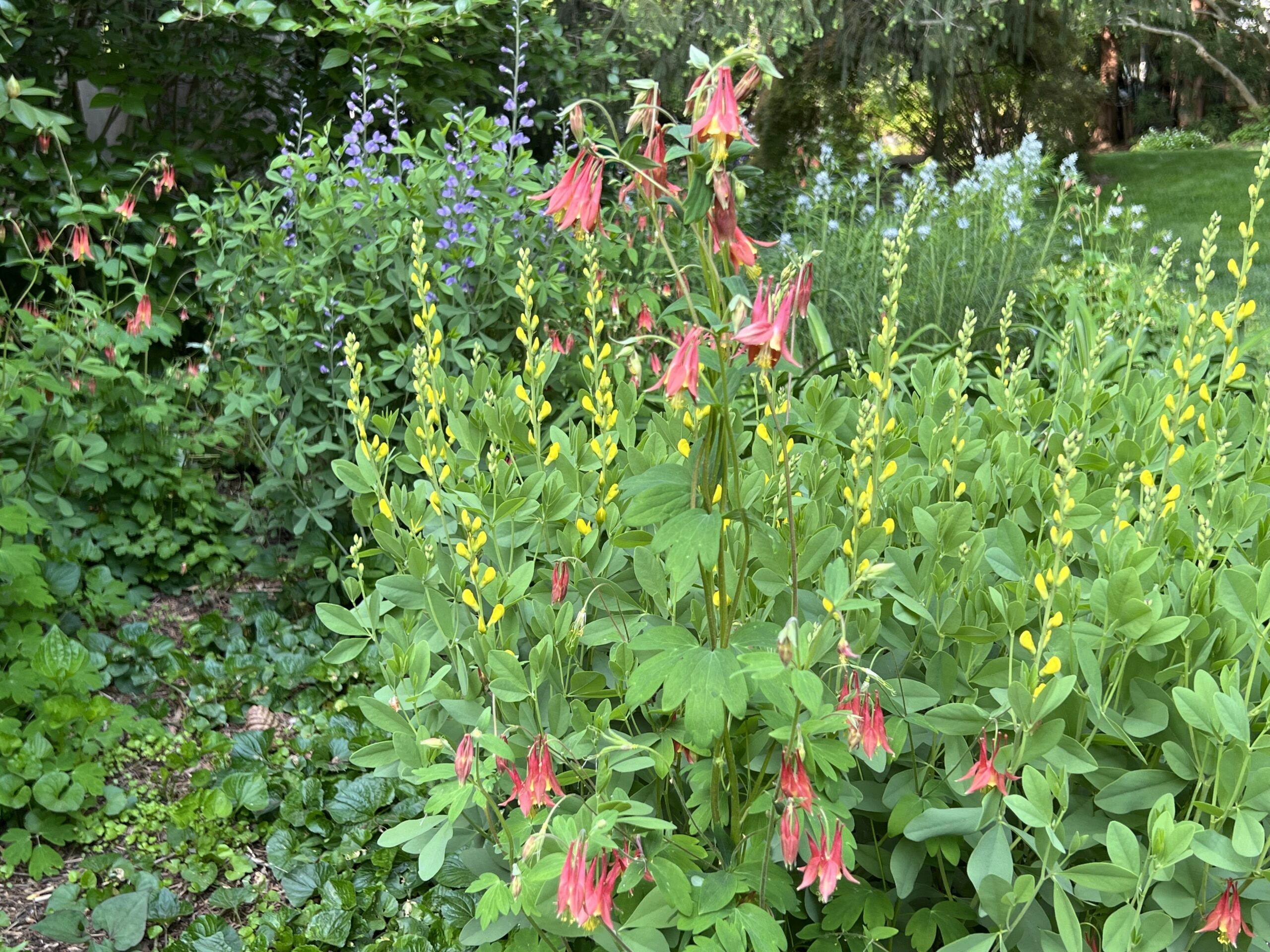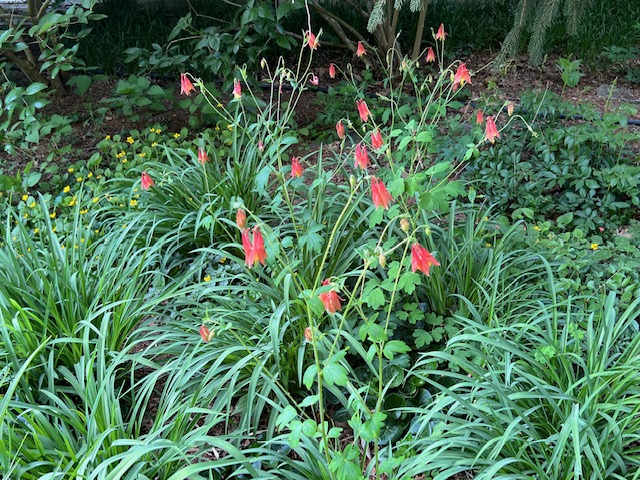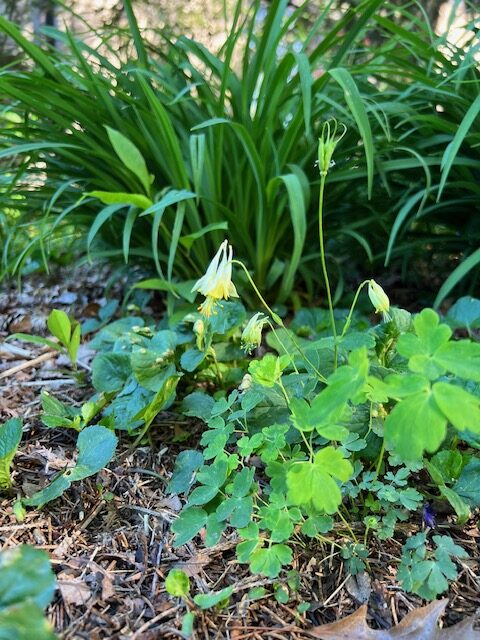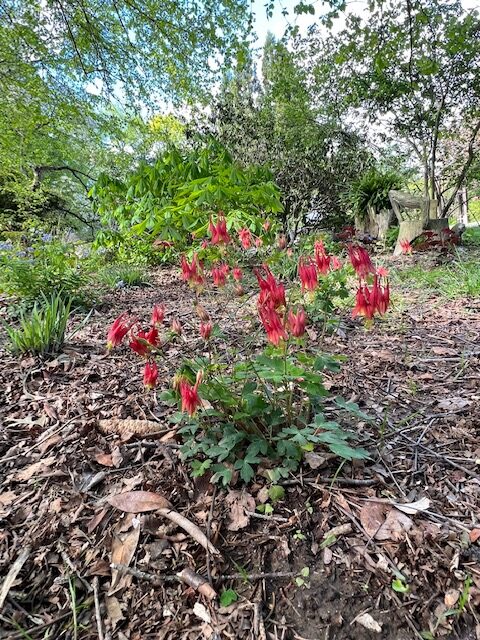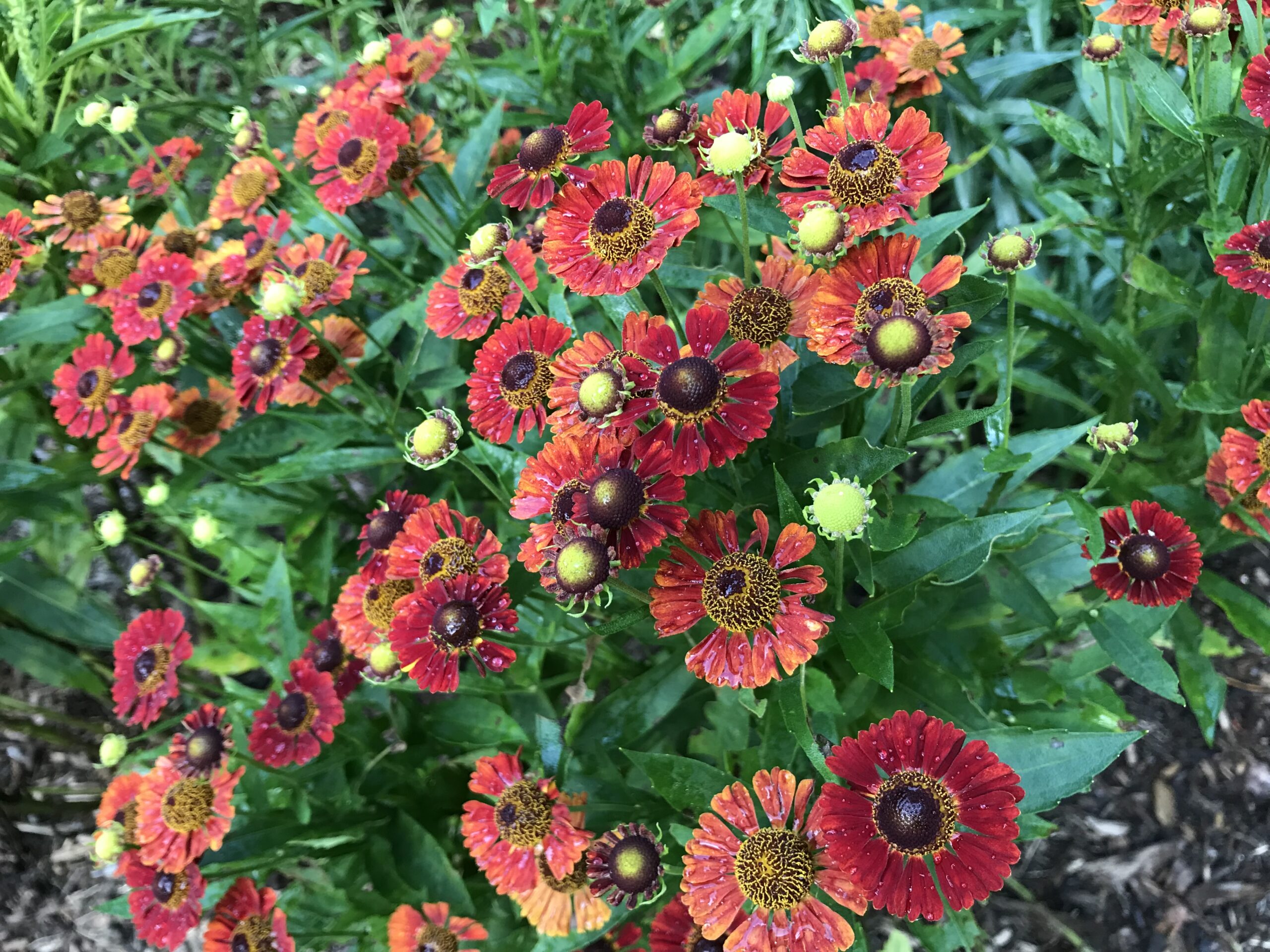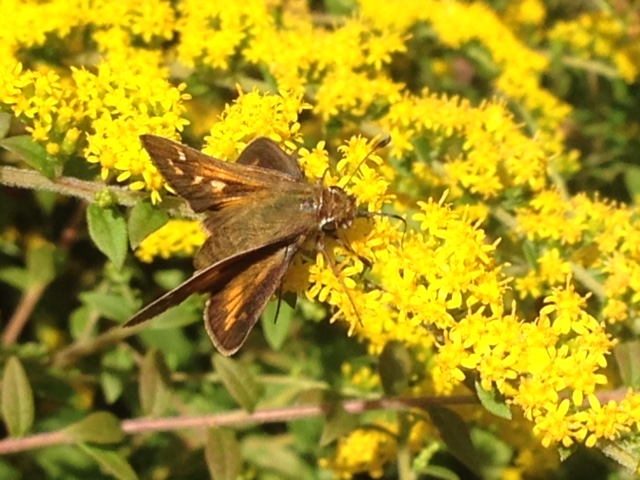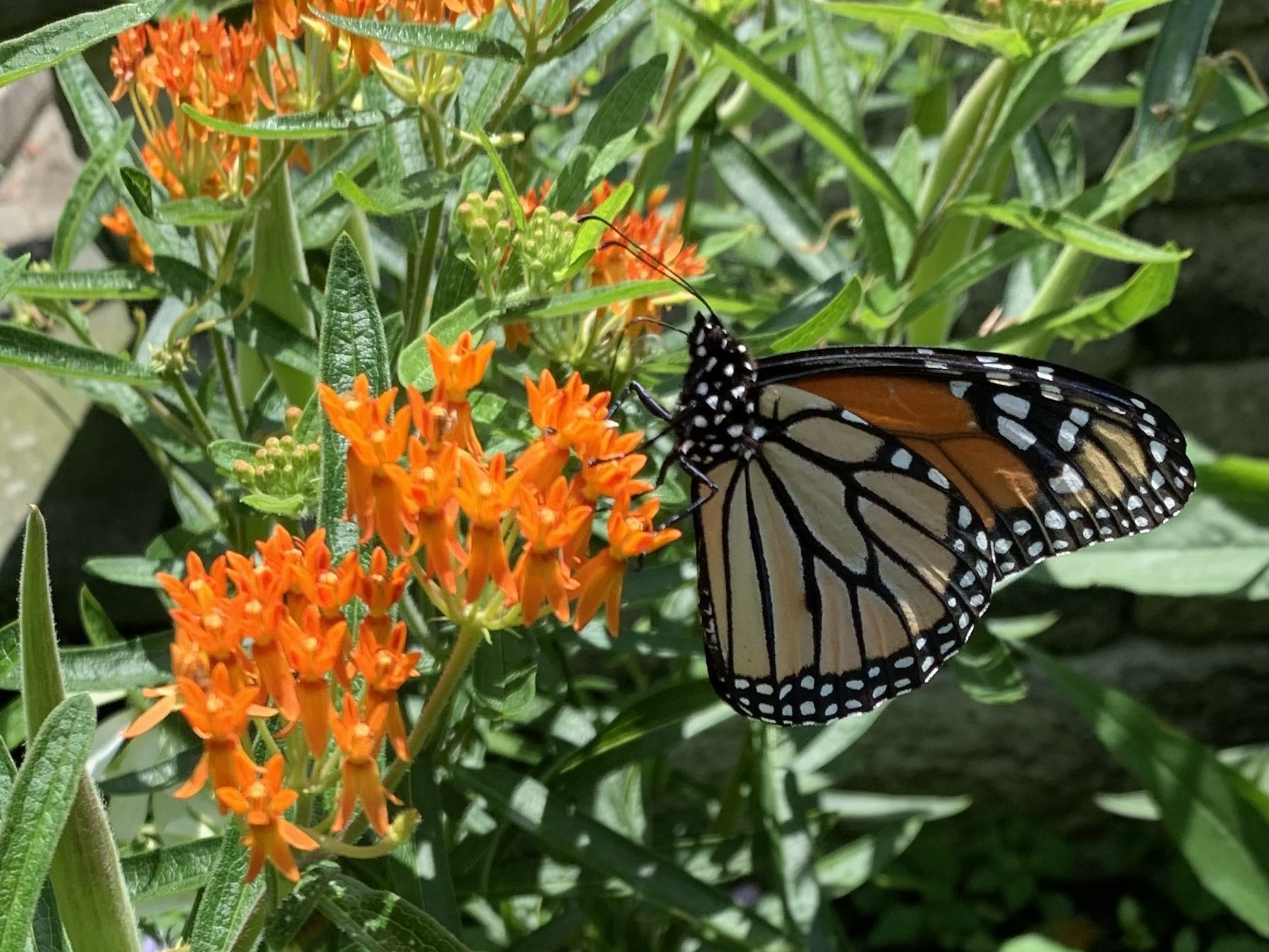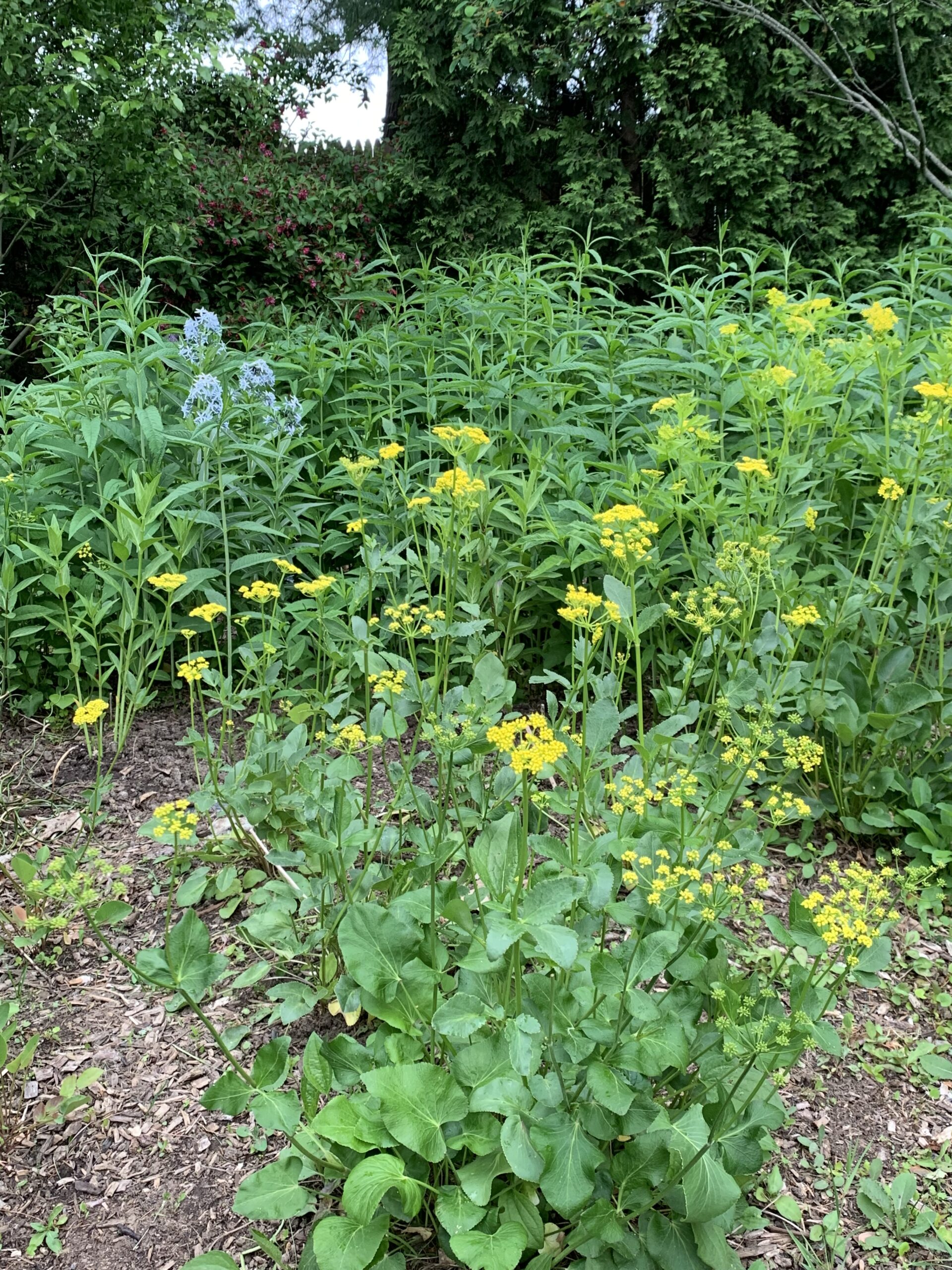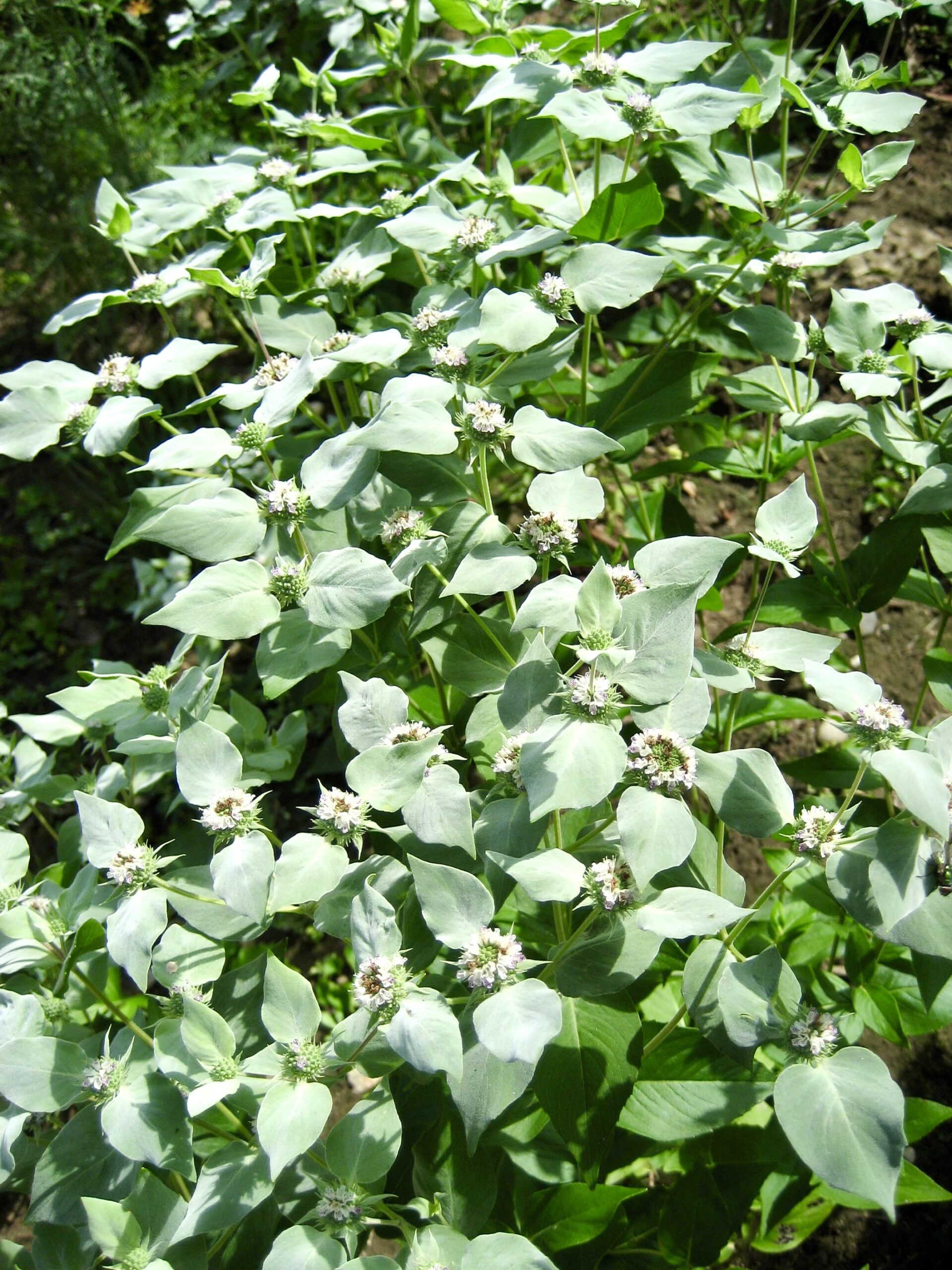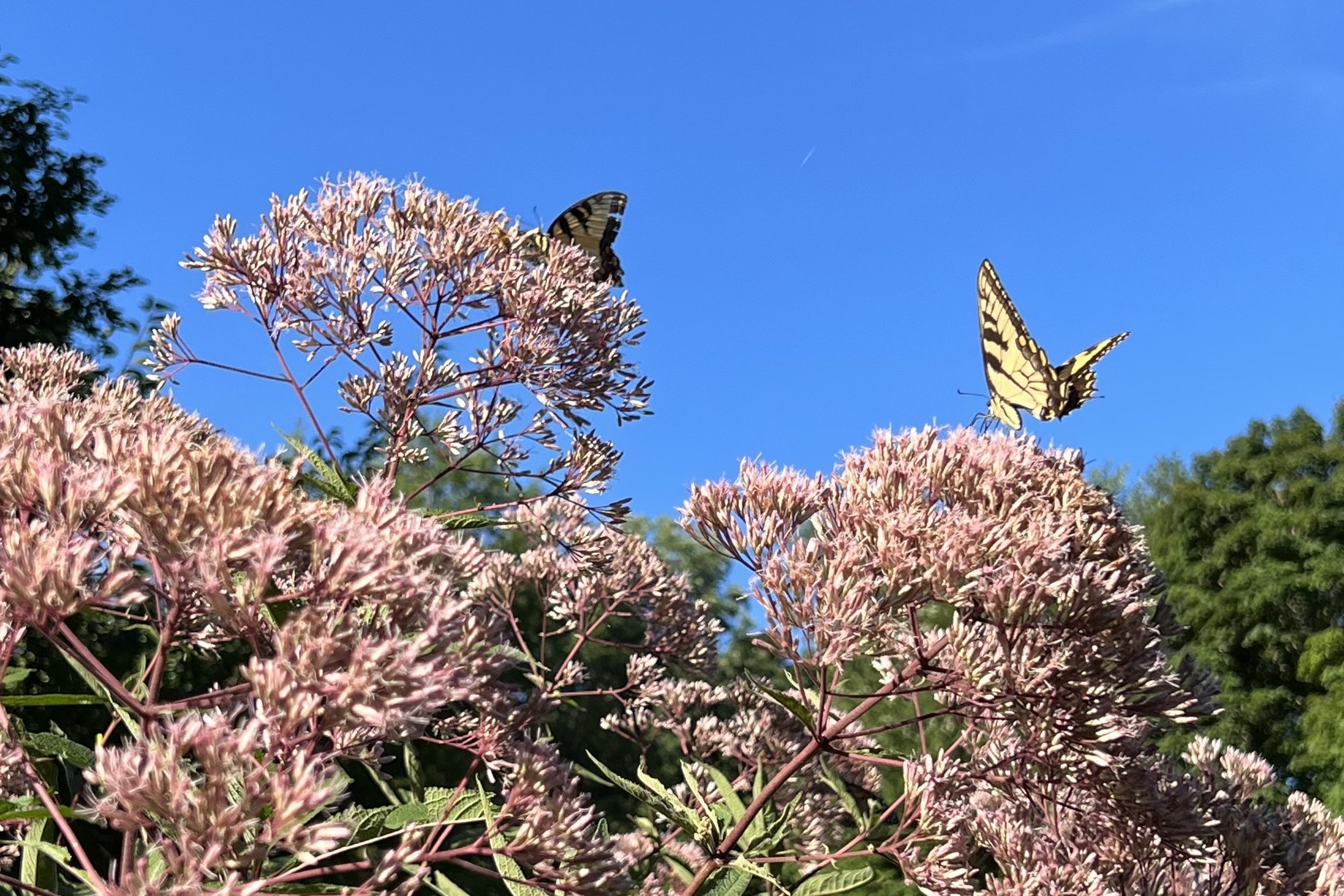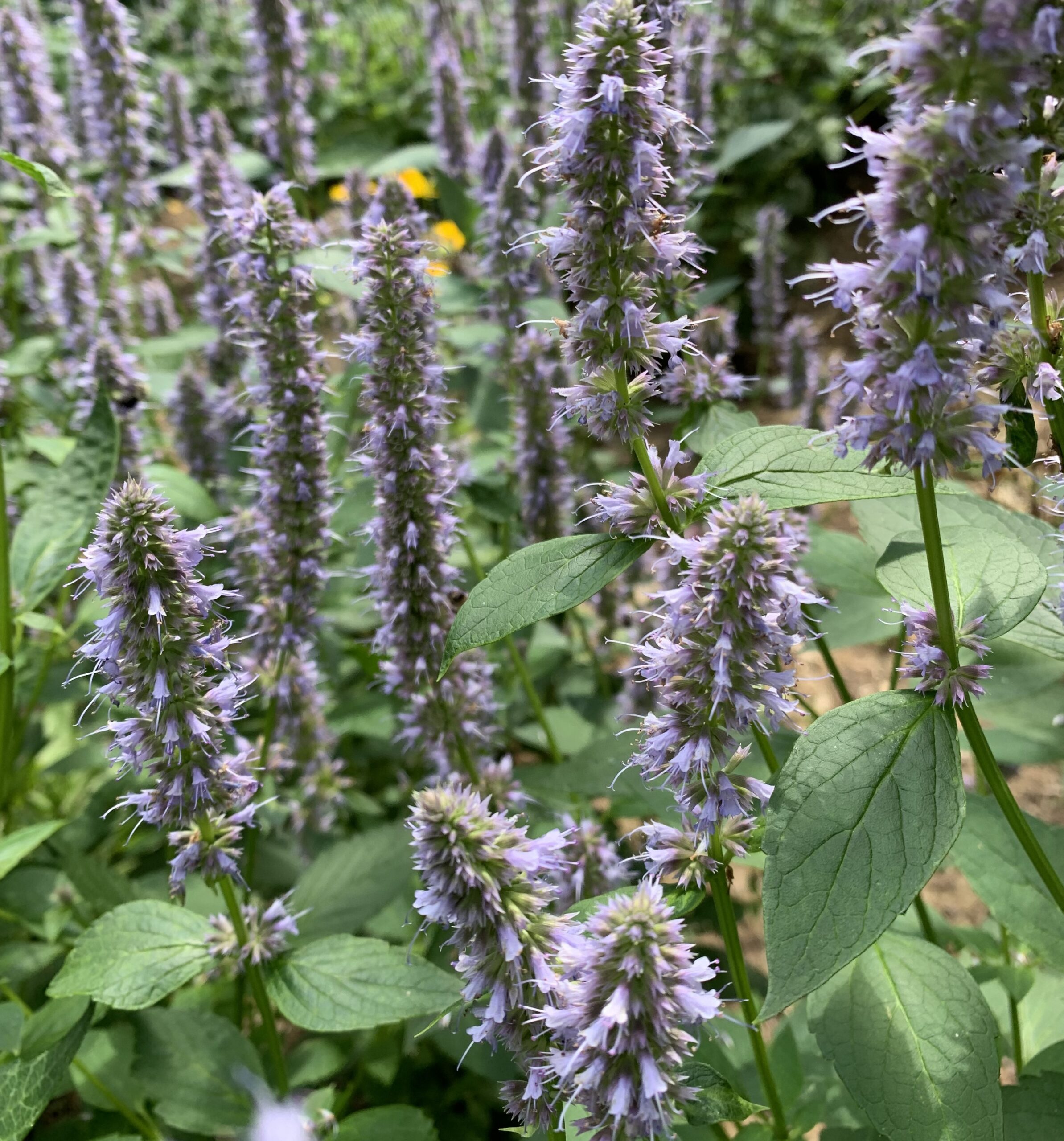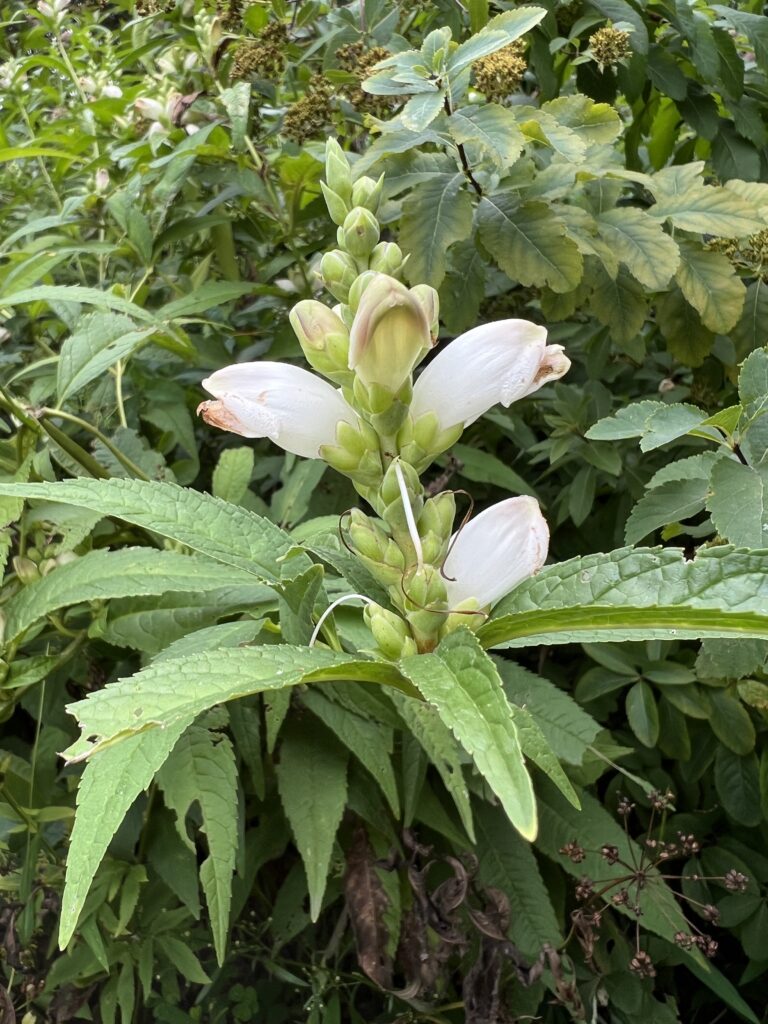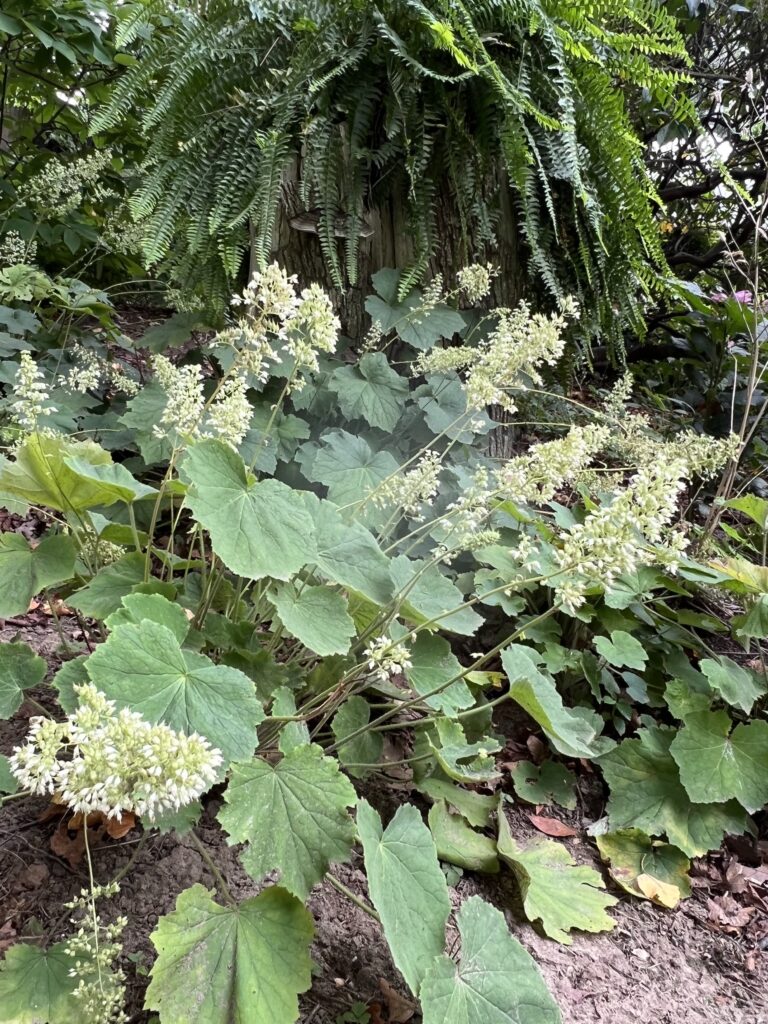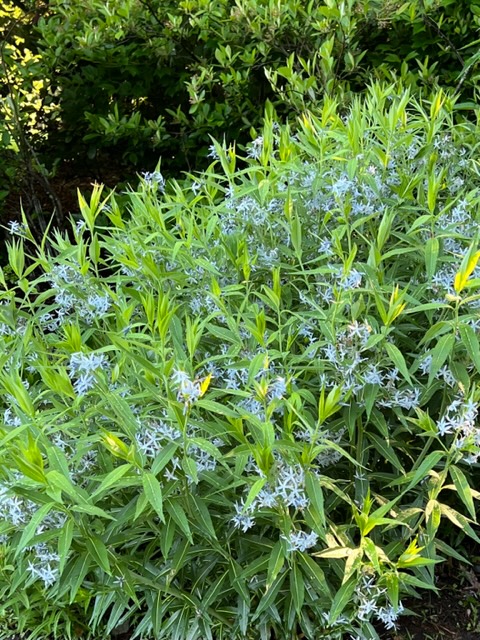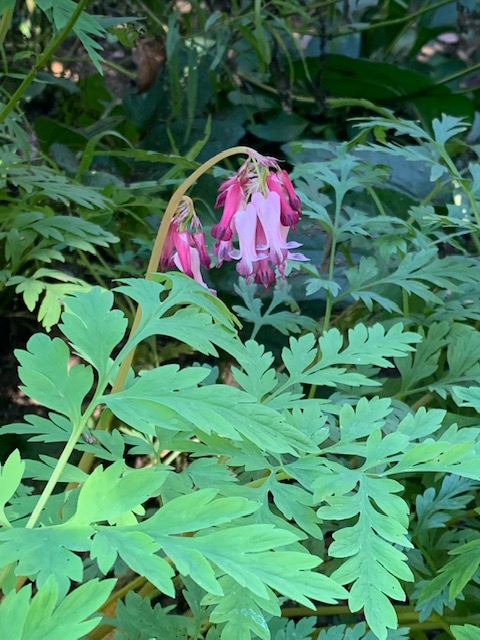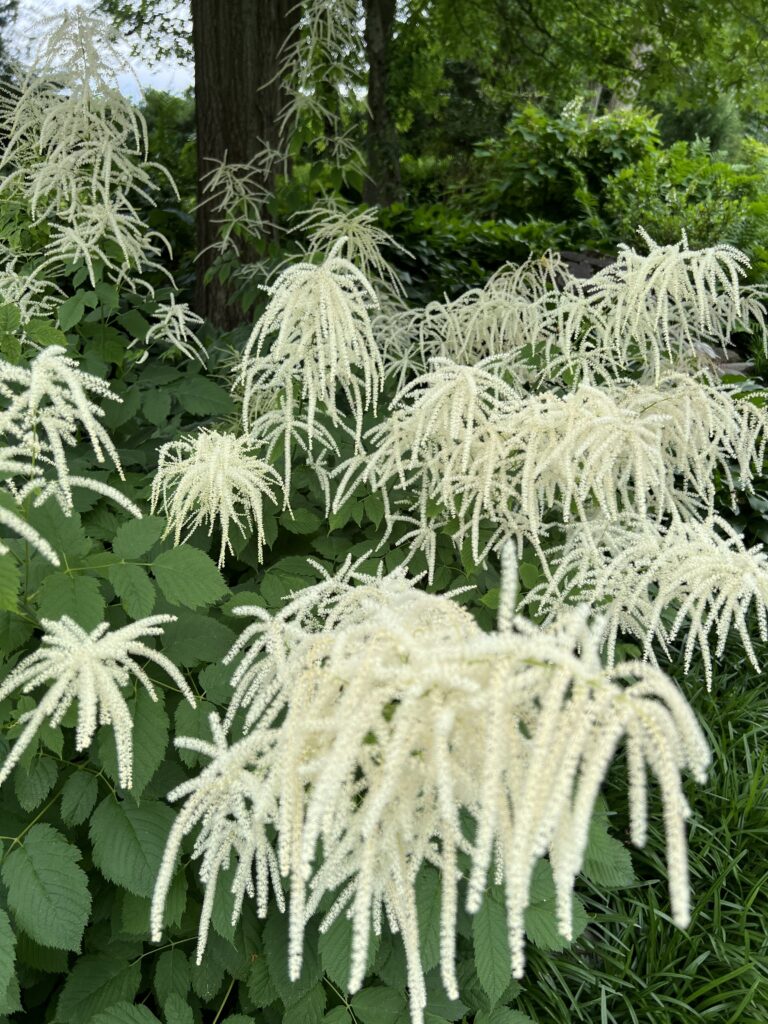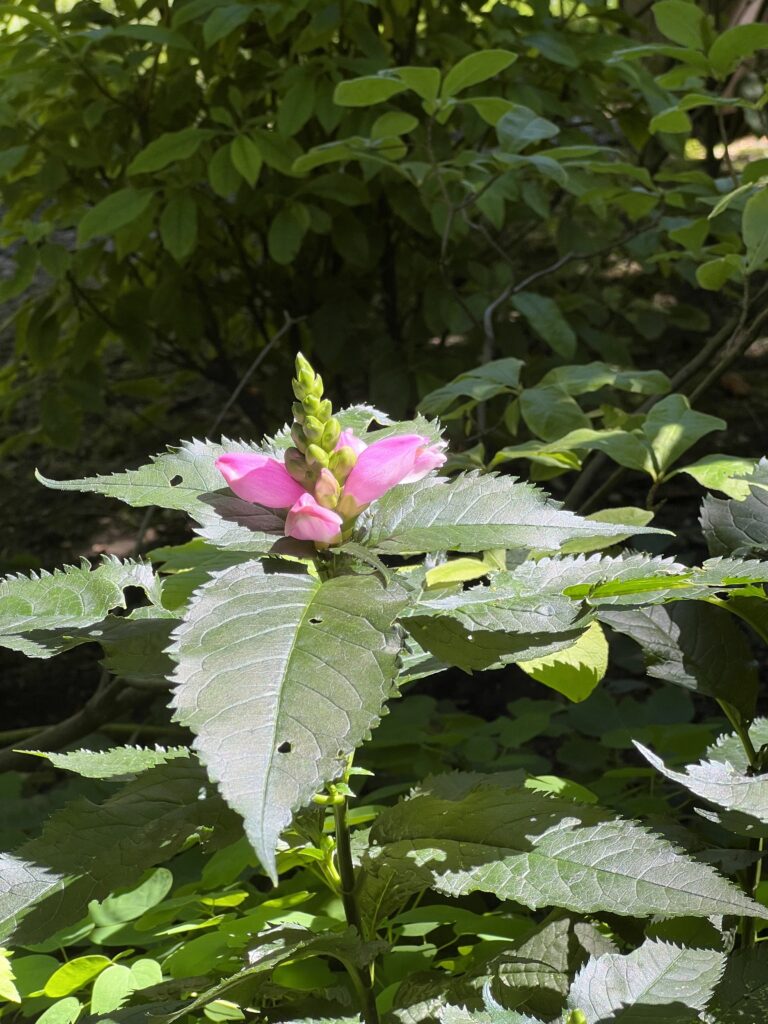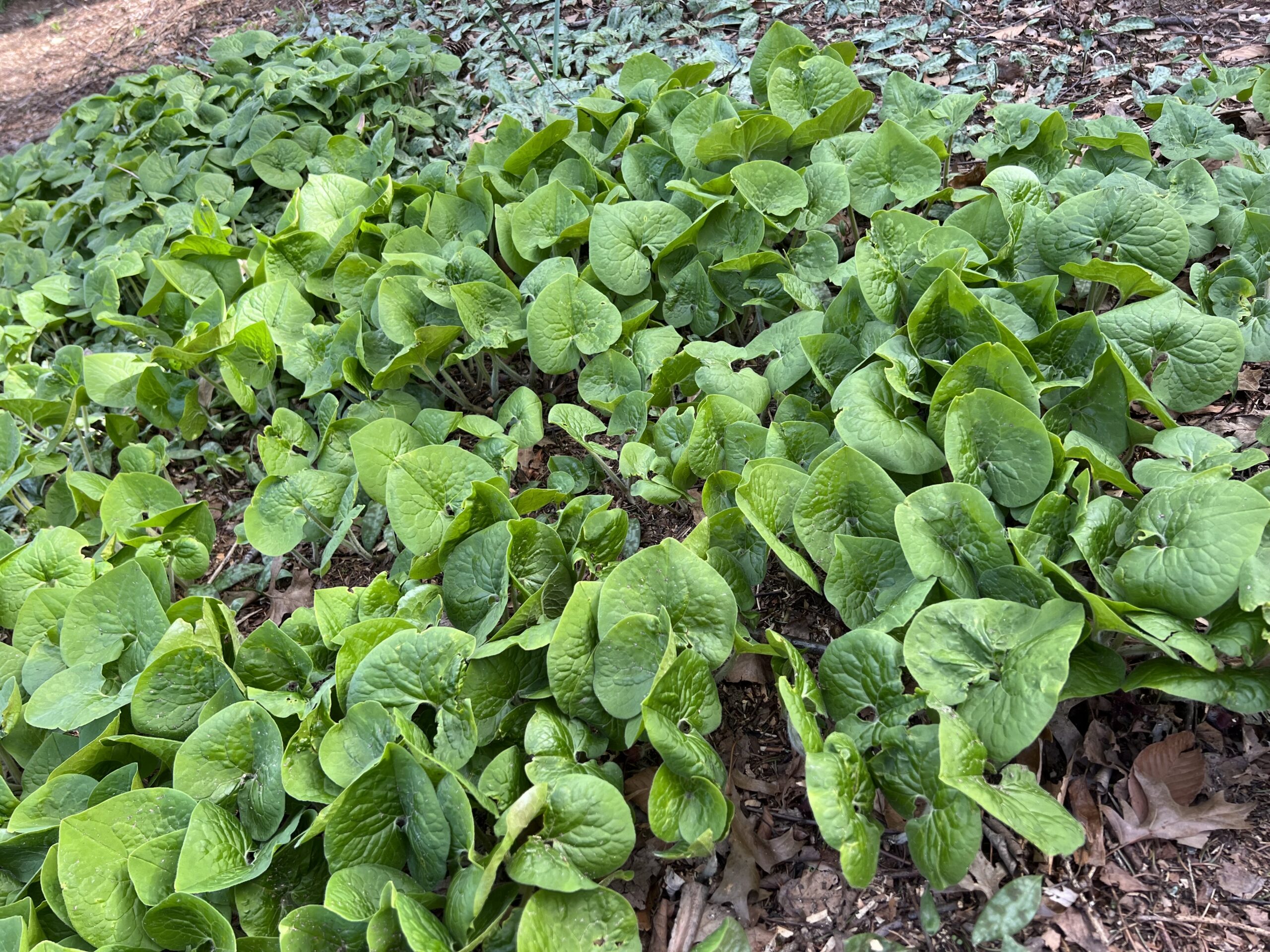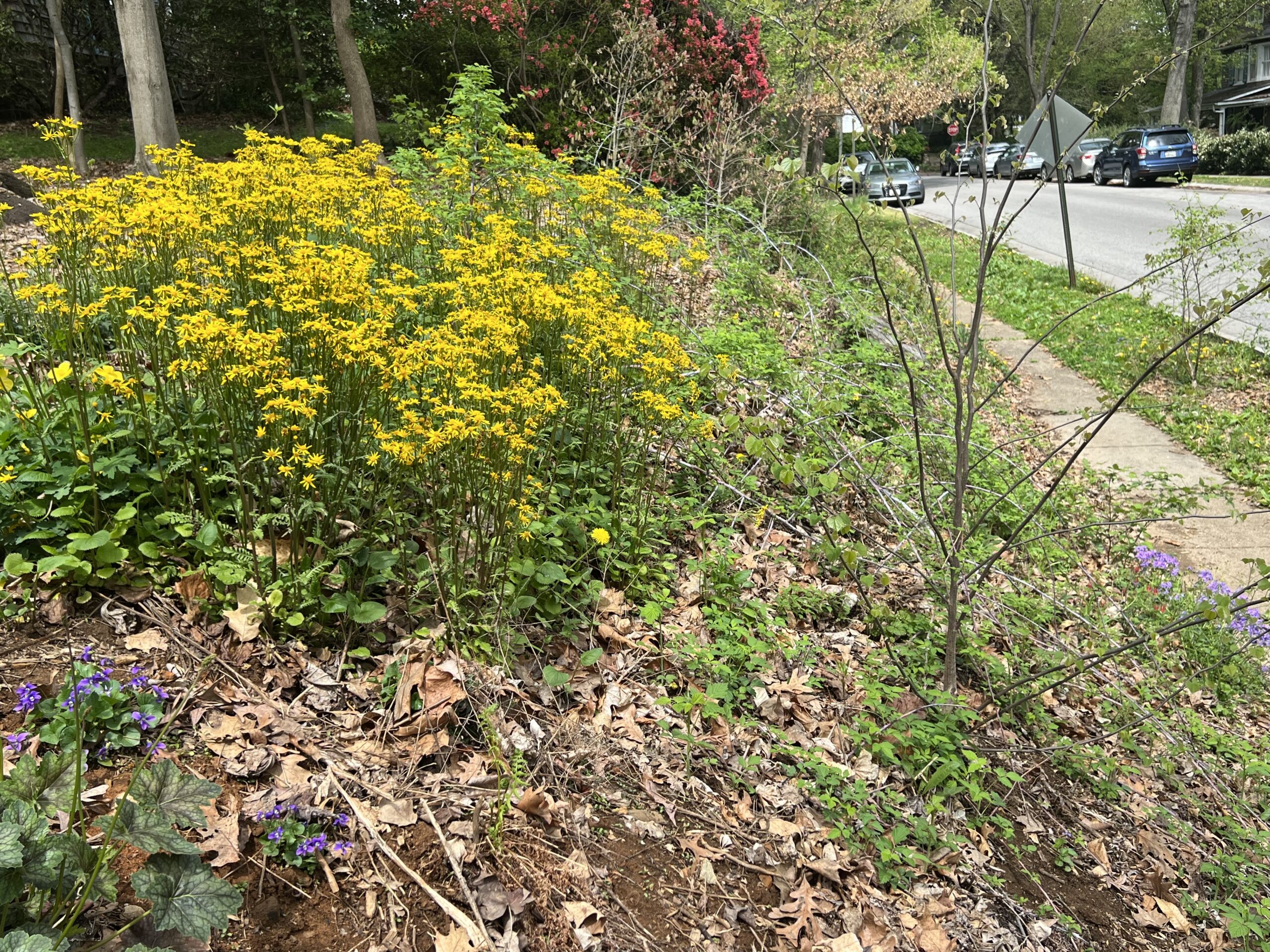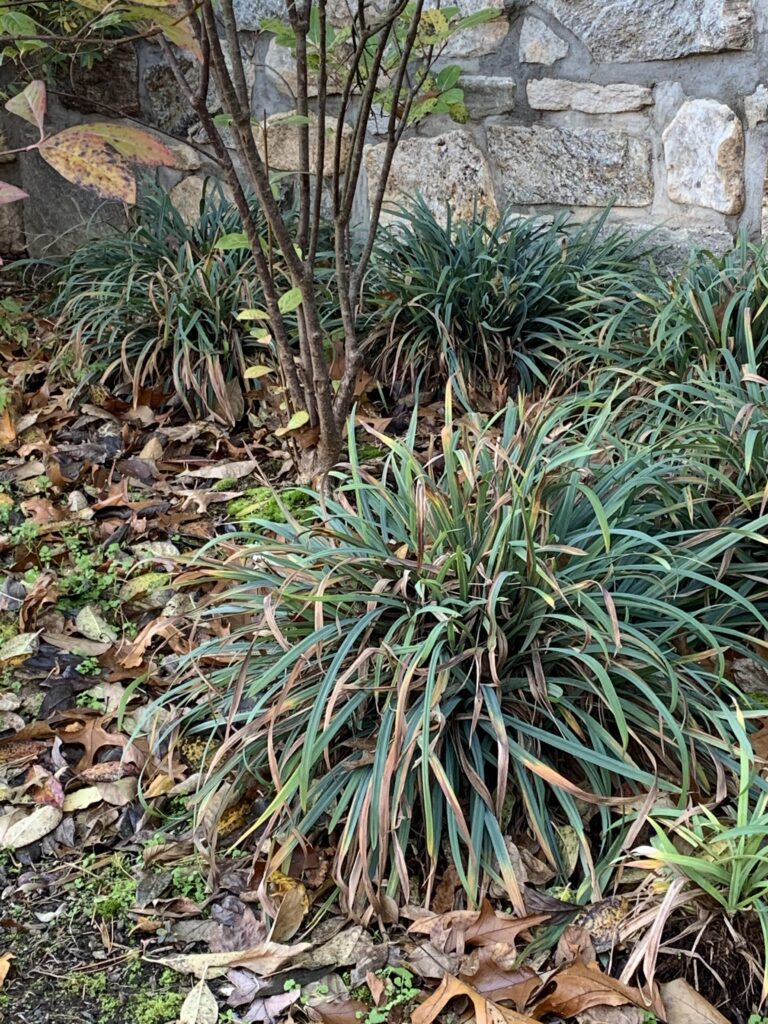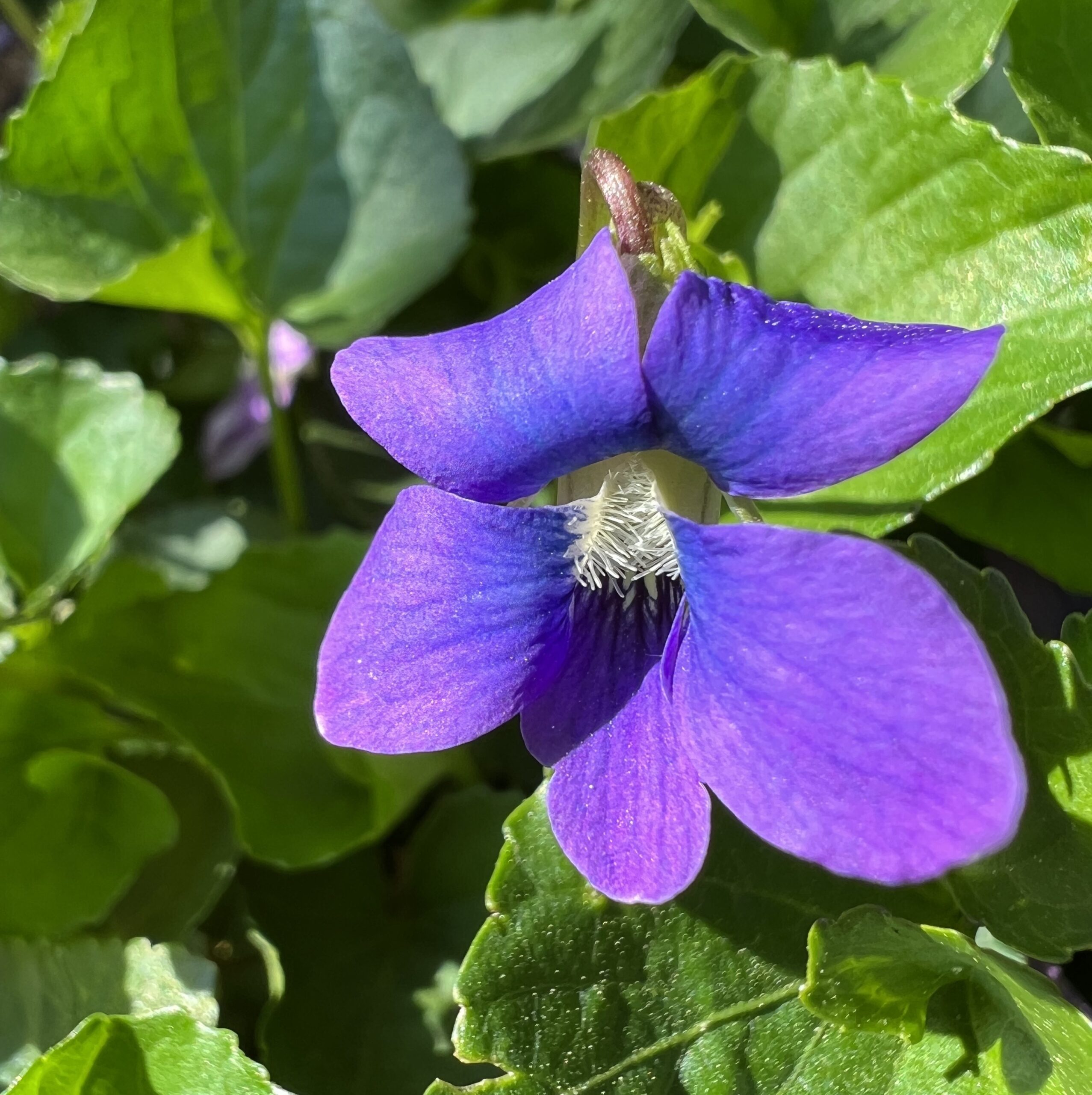Red Buckeye (Aesculus pavia) and Bottlebrush Buckeye (Aesculus parviflora) are two excellent flowering shrubs for home landscapes. If you’re ready to move beyond the ordinary, take a look at these beautiful buckeyes.
You’ve probably heard of Ohio Buckeye, a large Midwestern shade tree (Aesculus glabra) that has given its nickname to the state of Ohio, as well as its citizens, sports teams, and even a popular candy. The name comes from the large hard-shelled nut produced by the tree and said to resemble the eye of a deer. Of much greater interest for landscapes in the Eastern US, however, are two native shrubs that go by the same name and are in the same genus.
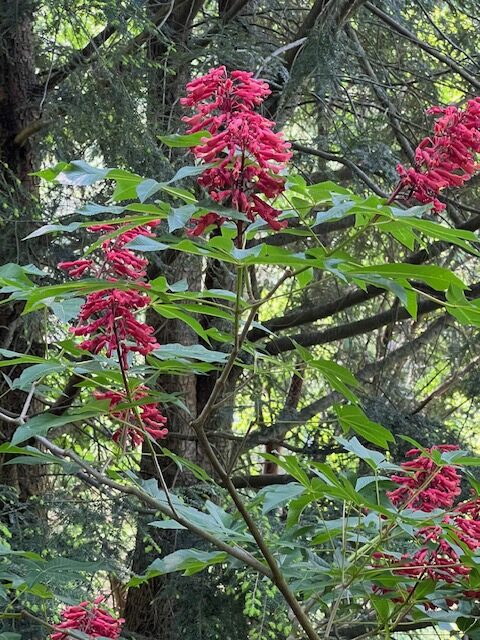
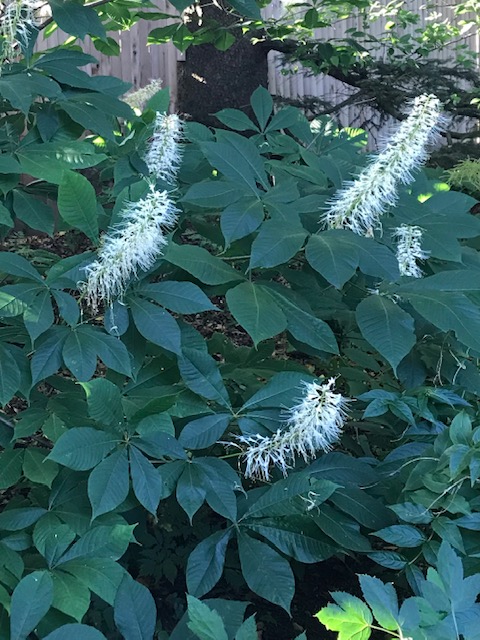
Both shrubs evolved in rich, shaded woodlands in the Southeastern US. Now successful well beyond their native range, they are grown in Zones 4 through 9 from New England to Florida. Stretching the definition of “native” a bit seems justified for these beautiful shrubs because of their value to hummingbirds and bees, as well as their superior garden merits.
Red Buckeye (Aesculus pavia) blooms first, in mid-May. One of its common names, “firecracker plant,” is not an exaggeration! The scarlet flowers blaze out of the shade in wooded areas, competing for attention with rhododendrons and azaleas. The tubular flowers seem custom-made for hummingbirds, blooming just as hummingbirds arrive for the season.
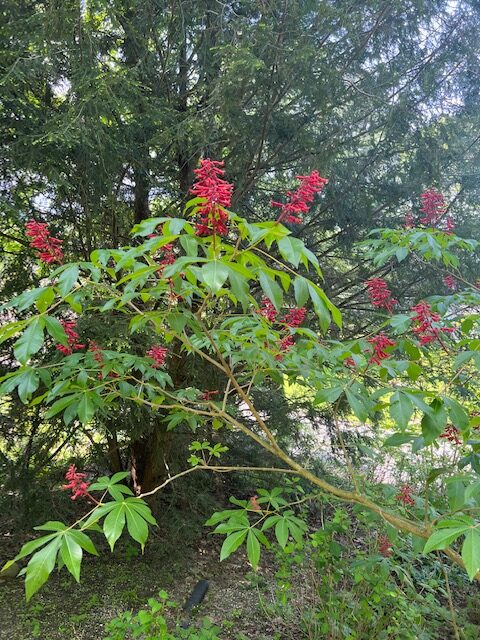
Bottlebrush Buckeye (Aesculus parviflora) blooms much later. The flower buds stand vertically above the leaves in June, like candles on a birthday cake, but they don’t open until July, when few other shrubs are in flower. The “bottlebrush” flowers are large, white, fluffy, and very attractive to pollinators. They are eye-catching in shade, and last for many weeks.
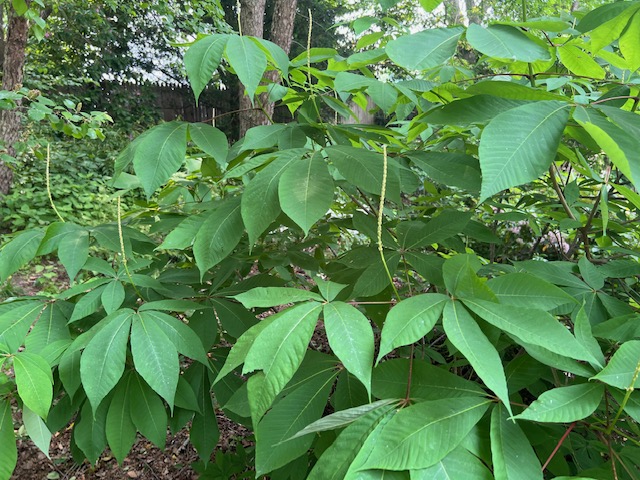
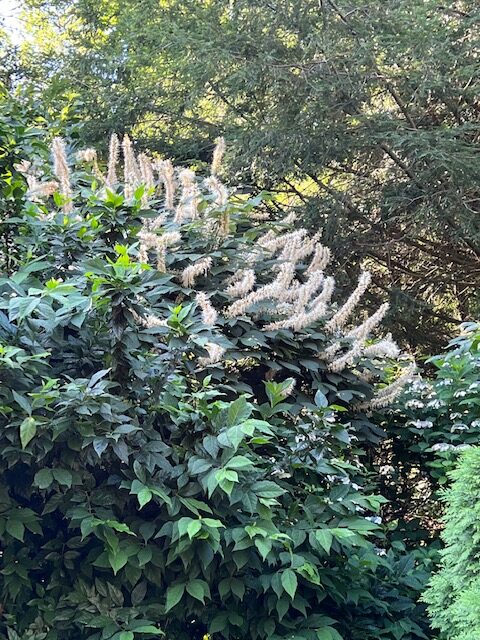
Like other plants in the buckeye family, both shrubs have large, dark green leaves that are “palmate,” meaning shaped like a hand, with five long narrow leaves on each stem. The leaves have a relaxed, slightly drooping habit, and gradually turn a soft yellow in the fall. Red Buckeye drops its leaves early, and for that reason, may look best with shorter shrubs planted in front of it.
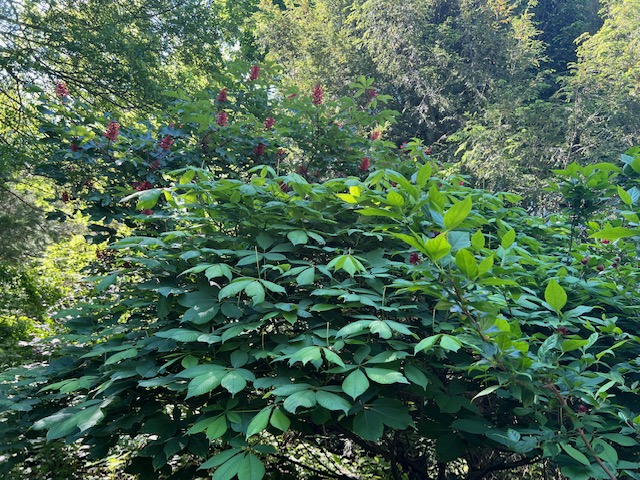
All parts of buckeyes are moderately toxic to humans and most animals. Deer may sample the shrub, but will learn to leave it alone. After flowering, the shrubs produce a globular pod containing large seeds. Squirrels seem to be the only animals interested in them. Indigenous people used the ground seeds of Red Buckeye to poison fish, making them easier to catch. But when prepared properly to remove toxic saponin compounds, buckeye nuts can be ground into a nutritious flour.
Both buckeye shrubs are slow-growing, but they are large and need room to spread their branches in the landscape. Red Buckeye grows taller, 10 to 20 feet, and up to 15 feet wide. It is a clump forming plant and will stay where you put it. Bottlebrush Buckeye stays shorter, 6 to 8 feet tall, but grows up to 20 feet wide. It is a “suckering” shrub that sends out runners tending to form colonies over a number of years. In the right spot, both are low maintenance shrubs.
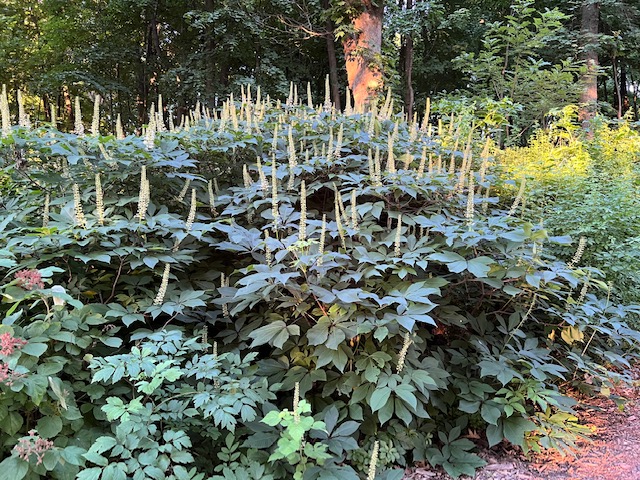
Buckeyes are understory plants and live happily in moist, organically rich soil. They can take full sun if they have enough moisture, but do better with afternoon shade in hot summers. Planted at the edge of a lawn (or meadow!) with tree cover above, buckeyes will do well, but the ideal spot is in a wooded area where autumn leaves are allowed to remain to enrich the soil. Buckeyes have a loose, open branching habit, so it is easy to underplant them with native ground covers.
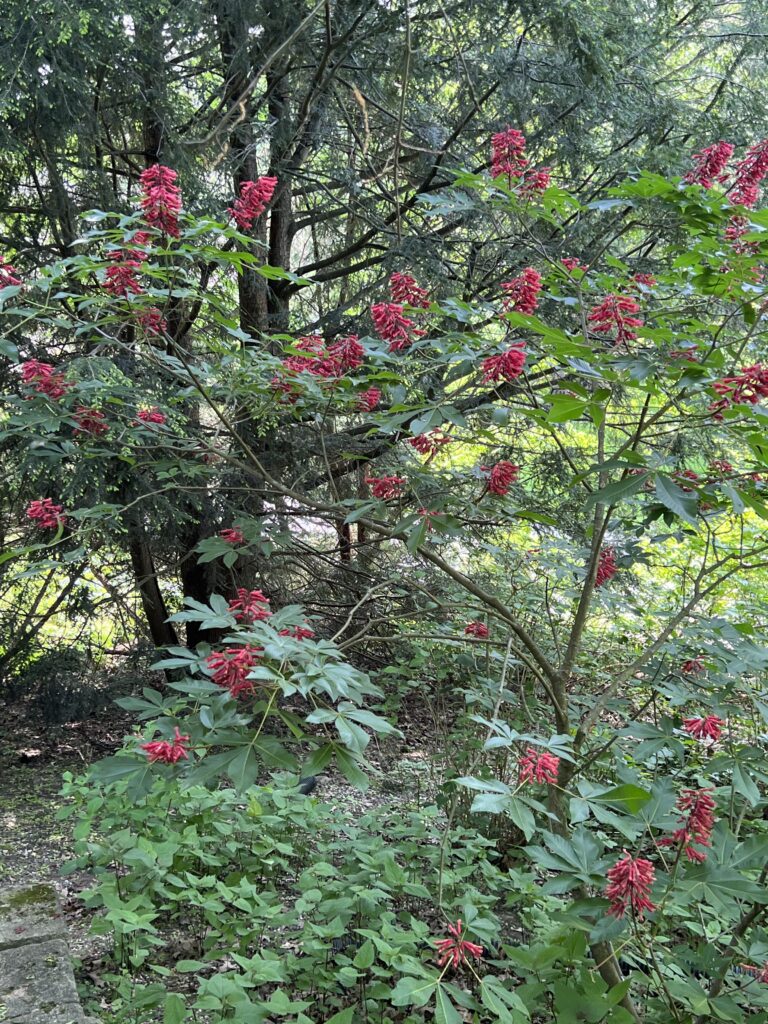
If you want to create a diverse native woodland for birds, bees, and butterflies, create some habitat by adding these buckeyes under a tree or two — and enjoy the view!

